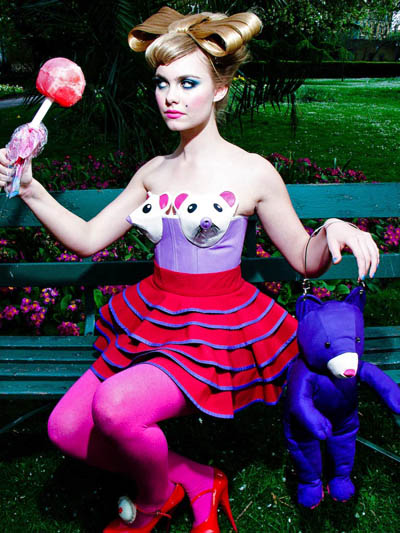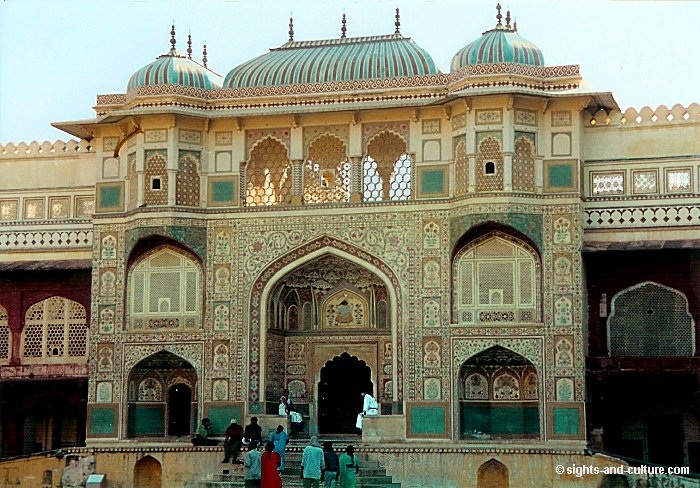Friday, August 28, 2009
What Rubbish!
We all love the serious implications that fashion holds. We love hearing how Vera Wang's collection was actually a reference to the Bolshevik revolution and how Dior's expertly crafted dresses were actually inspired from Madame Butterfly. Fashion is said time and time again to be rooted in world much deeper than the planet of cocktail dresses. It is said that fashion acts as art history, a cultural meterstick of our times, a way to connect our vanity with self reflection. This is all very moving and touching but there are some days when you want to cut the Fidel Castro speech and exclaim, "People, they're just clothes." For those days there's rubbishmag.com which is like fashion's cheeky, flippant cousin that reveals all the silliness that is weaved into fashion's dignified seams. Because when you strip away the bombastic adjectives and the cerebral analysis fashion is just a whole lot of fun.
Wednesday, August 26, 2009
Absence Makes the Heart go Fonder
Well atleast I hope so. I know I have been MIA on the blogging circiut as of late. But now that I have my laptop posts will become much more frequent. I hope I haven't lost the handful of readers that I had. Becauase well there's nothing sadder than a girl talking to herself. Until than I offer a peace offering in the form of a beautful Richard Avedon photograph
Wednesday, August 12, 2009
Braless Revisited
To me the word braless is usually synonymous with Hedi Montag and wardrobe malfunctions (which coincidentally are tantamount to each other). Yet when Bottega Veneta did a version of this "loose" way of dressing it came off as erotic yet tasteful. When flipping through ads in a magazine I stopped and glanced twice at the Bottega Veneta spread. There was something almost carnal about it that dared you to look twice. The girls in the spreads looked in control and refined yet suggestive and cheeky. In the words of Harry Potter "mischief managed."
Monday, August 10, 2009
The Lady of the Pink City
I first remember reading about Gayatri Devi in 7th grade in a profile of her in Departure Magazine. She was the embodiment of everything that a young girl imagines a princess to be. She was beautiful and refined yet not completely tangible. It was almost as if she was ethereal somehow, leading a life that has long since rusted away in fairy tale books, unable to be fully captured through a story or a picture. They say that her wealth was "beyond imaginable" with a childhood filled with exotic adventures. According to a New York Times article, Devi shot her first panther when she 12, had a flock of trained parrots that could ride bicycles and pet turtles that had emerald encrusted shells.
Despite her lavish life, which included shopping sprees at Harrods, Devi was not resented by the public for her extreme wealth and beauty. Unlike Queen Marie Antoinette and the Duchess of Devonshire who were ridiculed by there subjects for their ostentatious nature Devi symbolized a beacon of hope for women of lower castes. She created a school for young girls in Jaipur that focused on eradicating the traditional notion that girls should be uneducated and take purdah. Devi led the life of a traditional princess yet reached her hand out to get a firmer grasp in her surroundings. She was elected in Parliament 3 times and spend 5 months in jail.
People often said that Devi was memorizing. With her French perfume and shimmering saris Devi was a socialite, splitting time between New York, London and Jaipur and entertaining the likes of Jackie O. Vogue voted her one of the top ten most beautiful women in the world. Yet this beauty was just as closely associated with Devi as it was with her city of Jaipur. And to me that is what is really alluring about Devi, her city. With it's beautiful palaces and ornate jewelry it seems like anyone could be a princess there, that everyone could live in a state of opulence. An opulence not defined by designer handbags but by a rich history. In Jaipur it seems that one gets a feeling of magnificence, a feeling that one cannot receive in a Waldorf Historia. It is a feeling of a culture, of a life that is hanging somewhere between obscelence and modernity. When Maharani Devi left our world a few days she left with us a city that is the one of the last of its kind, quite like Devi herself .
Despite her lavish life, which included shopping sprees at Harrods, Devi was not resented by the public for her extreme wealth and beauty. Unlike Queen Marie Antoinette and the Duchess of Devonshire who were ridiculed by there subjects for their ostentatious nature Devi symbolized a beacon of hope for women of lower castes. She created a school for young girls in Jaipur that focused on eradicating the traditional notion that girls should be uneducated and take purdah. Devi led the life of a traditional princess yet reached her hand out to get a firmer grasp in her surroundings. She was elected in Parliament 3 times and spend 5 months in jail.
People often said that Devi was memorizing. With her French perfume and shimmering saris Devi was a socialite, splitting time between New York, London and Jaipur and entertaining the likes of Jackie O. Vogue voted her one of the top ten most beautiful women in the world. Yet this beauty was just as closely associated with Devi as it was with her city of Jaipur. And to me that is what is really alluring about Devi, her city. With it's beautiful palaces and ornate jewelry it seems like anyone could be a princess there, that everyone could live in a state of opulence. An opulence not defined by designer handbags but by a rich history. In Jaipur it seems that one gets a feeling of magnificence, a feeling that one cannot receive in a Waldorf Historia. It is a feeling of a culture, of a life that is hanging somewhere between obscelence and modernity. When Maharani Devi left our world a few days she left with us a city that is the one of the last of its kind, quite like Devi herself .
Saturday, August 8, 2009
Wednesday, August 5, 2009
Saturday, August 1, 2009
Where in the World is Azzedine Alaia?


Where in the World is Azzedine Alaia? Not in the spreads of Vogue or on the runways of Fashion Week that's for sure. Every time I would come across his name an interest would spark. Here was a designer who was one of the emblems of 80's fashion and known as the master of female form yet you couldn't look at works on style.com or search his name in WWD.
Alaia is one of the last couturiers of the old world, a world of Cristobal Balenciaga and Christian Dior. A world where strong relationships were forged with clients and models, a world where the designer had a hand in every seam, a world not so binded by commercial success. One of the reasons why Alaia is so enigmatic is because he doesn't design on the protocol schedule. He doesn't design for seasons instead he only designs when he is truly inspired, inspired he says, by the evocation of certain materials. In an age where muses are diluted among celebrities Alaia keeps his close, his strongest supporters such as Naomi Campbell and Stephanie Seymour refer to him as Papa. It is to be said that Alaia's house at any time of day is always filled with artists and he is known to have one the greatest haute couture collections in the world. His clothes, his life and his aesthetic seem to be steeped in some other world, a world richer, saturated with more culture.
Known as the "King of Cling" Alaia, who studied sculpture is said to make clothes that flatter the women body, unparalleled to anyone another designer. It is strange that in a time where fall runways are filled with Alaia influenced designs his name is absent from mainstream fashion. His clothes are rarely featured in Vogue nor are any of his work featured in the "Model as Muse" exhibition, despite the fact that Alaia is known for having a particularly strong relationship with models from Tatjana Patitz to Campbell. He blames this absence on Anna Wintour who also rarely features his clothes in editorials.
So where is he? Tunisia? Paris? His clothes seem mysteriously to be appear at Barney's every so often and people are known to collect his clothes as treasured pieces of art. Alaia seems more elusive than Carmen herself who, with her red trench coat and matching fedora is pretty easy to spot. Yet I guess when your clothes are so beautiful you really don't have to be center stage to get the recognition you deserve.
Subscribe to:
Posts (Atom)















